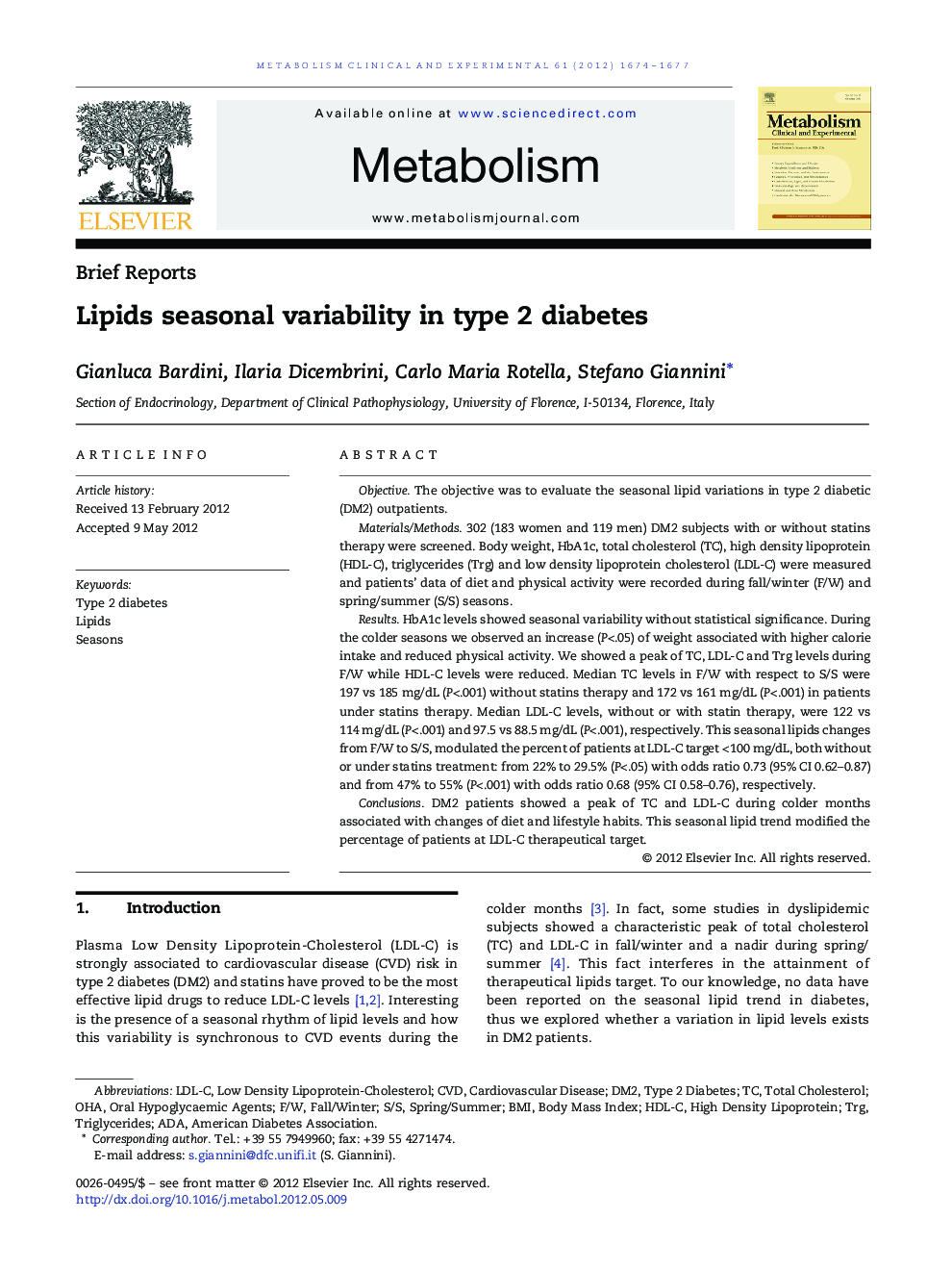| Article ID | Journal | Published Year | Pages | File Type |
|---|---|---|---|---|
| 5903589 | Metabolism | 2012 | 4 Pages |
ObjectiveThe objective was to evaluate the seasonal lipid variations in type 2 diabetic (DM2) outpatients.Materials/Methods302 (183 women and 119 men) DM2 subjects with or without statins therapy were screened. Body weight, HbA1c, total cholesterol (TC), high density lipoprotein (HDL-C), triglycerides (Trg) and low density lipoprotein cholesterol (LDL-C) were measured and patients' data of diet and physical activity were recorded during fall/winter (F/W) and spring/summer (S/S) seasons.ResultsHbA1c levels showed seasonal variability without statistical significance. During the colder seasons we observed an increase (P<.05) of weight associated with higher calorie intake and reduced physical activity. We showed a peak of TC, LDL-C and Trg levels during F/W while HDL-C levels were reduced. Median TC levels in F/W with respect to S/S were 197 vs 185 mg/dL (P<.001) without statins therapy and 172 vs 161 mg/dL (P<.001) in patients under statins therapy. Median LDL-C levels, without or with statin therapy, were 122 vs 114 mg/dL (P<.001) and 97.5 vs 88.5 mg/dL (P<.001), respectively. This seasonal lipids changes from F/W to S/S, modulated the percent of patients at LDL-C target <Â 100 mg/dL, both without or under statins treatment: from 22% to 29.5% (P<.05) with odds ratio 0.73 (95% CI 0.62-0.87) and from 47% to 55% (P<.001) with odds ratio 0.68 (95% CI 0.58-0.76), respectively.ConclusionsDM2 patients showed a peak of TC and LDL-C during colder months associated with changes of diet and lifestyle habits. This seasonal lipid trend modified the percentage of patients at LDL-C therapeutical target.
